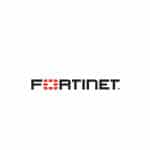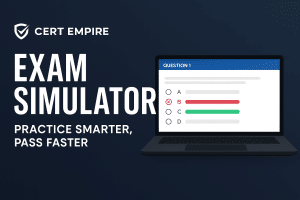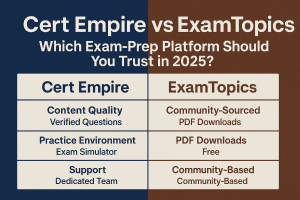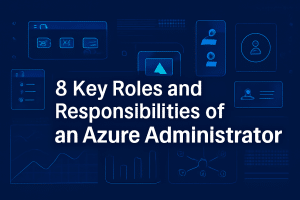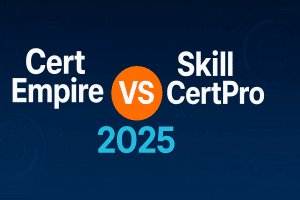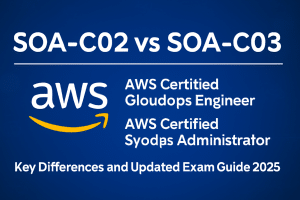The Certified Information Systems Security Professional (CISSP) exam, offered by ISC2, is one of the most prestigious certifications in the cybersecurity field. It validates your ability to design, implement, and manage a comprehensive cybersecurity program. One of the first steps to preparing for the CISSP exam is to familiarize yourself with the eight domains that make up the exam. These domains are critical to understanding the broad scope of the CISSP certification and how it applies to real-world cybersecurity practices.
TLDR: Too Long; Didn’t Read
The CISSP exam consists of eight key domains that cover a broad range of cybersecurity topics. These domains include Security and Risk Management, Asset Security, Network Security, Identity and Access Management, and more. Understanding each domain thoroughly is critical to passing the CISSP exam. Key areas to focus on include risk management frameworks, data protection strategies, secure software development, and incident response techniques.
What Are the CISSP Exam Domains?
The CISSP exam is structured around the ISC2 Common Body of Knowledge (CBK®), which divides information security into eight domains. Each domain represents a critical area of cybersecurity knowledge and forms the foundation of the CISSP exam. Understanding these domains is essential for both exam preparation and for a career in cybersecurity.
Here’s a quick look at each domain:
- Security and Risk Management (16%)
- Asset Security (10%)
- Security Architecture and Engineering (13%)
- Communication and Network Security (13%)
- Identity and Access Management (IAM) (13%)
- Security Assessment and Testing (12%)
- Security Operations (13%)
- Software Development Security (10%)
Now, let’s dive into each domain and explore what it entails.
| Domain | Weight | Key Topics |
| Security and Risk Management | 16% | Governance, compliance, risk management |
| Asset Security | 10% | Data protection, ownership |
| Security Architecture & Engineering | 13% | Encryption, secure design |
| Communication & Network Security | 13% | Secure protocols, data in transit |
| Identity & Access Management | 13% | Authentication, authorization |
| Security Assessment & Testing | 12% | Testing, audits |
| Security Operations | 13% | Incident response, forensics |
| Software Development Security | 10% | Secure coding, SDLC |
1. Security and Risk Management (16%)
This domain focuses on governance, risk management, and compliance. It covers the foundations of information security, including risk assessment, legal and regulatory issues, and the implementation of security controls.
Key Concepts:
- Risk Management Frameworks (e.g., NIST, ISO 27001)
- Compliance and Governance
- Legal and Regulatory Issues (e.g., GDPR, HIPAA)
Preparation Tips:
- Focus on understanding risk management methodologies and compliance frameworks.
- Study key laws and regulations affecting cybersecurity and data protection.
- Be comfortable with creating and implementing security policies and risk mitigation strategies.
2. Asset Security (10%)
This domain covers the classification, ownership, and protection of assets. You’ll need to understand how to protect data throughout its lifecycle, from creation to destruction.
Key Concepts:
- Data Classification and Handling
- Data Privacy
- Security for Data at Rest and in Transit
Preparation Tips:
- Learn about different data classification schemes (e.g., public, confidential, restricted).
- Understand the importance of data retention and secure destruction processes.
- Study data protection standards and practices, including encryption and access control.
3. Security Architecture and Engineering (13%)
This domain focuses on the technical aspects of system design and security engineering. It involves topics like encryption, network security, and secure system design principles.
Key Concepts:
- Security Models (e.g., Bell-LaPadula)
- Encryption and Cryptography
- Security in System Design and Architecture
Preparation Tips:
- Review encryption algorithms and their applications.
- Study security architecture principles and how to integrate them into system designs.
- Get familiar with security models and how they apply to network and system security.
4. Communication and Network Security (13%)
This domain covers how to secure data communication and network infrastructure. It includes protecting data in transit, securing networks, and ensuring confidentiality, integrity, and availability.
Key Concepts:
- Secure Network Architecture
- Network Protocols (e.g., SSL/TLS, IPsec)
- Firewalls and Intrusion Detection Systems (IDS/IPS)
Preparation Tips:
- Study network security design principles, including the use of firewalls, VPNs, and IDS/IPS systems.
- Understand network protocols and their role in securing communications.
- Learn how to implement secure communication across various network environments.
5. Identity and Access Management (IAM) (13%)
IAM focuses on controlling who has access to which resources, ensuring that only authorized individuals or systems can access sensitive information.
Key Concepts:
- Authentication and Authorization Models
- Access Control Mechanisms (e.g., RBAC, ABAC)
- Identity Federation and Single Sign-On (SSO)
Preparation Tips:
- Understand multi-factor authentication (MFA) and SSO implementation.
- Study different access control models and their applications.
- Familiarize yourself with identity federation and how to manage it in a cloud environment.
6. Security Assessment and Testing (12%)
This domain covers how to assess the effectiveness of security controls, conduct audits, and perform security testing.
Key Concepts:
- Vulnerability Assessments
- Penetration Testing
- Security Audits and Reviews
Preparation Tips:
- Practice using security testing tools (e.g., Nessus, Burp Suite).
- Study the process for conducting penetration testing and how to interpret results.
- Learn how to perform security audits and vulnerability assessments.
7. Security Operations (13%)
This domain focuses on the day-to-day operations that ensure the continued security of systems, including incident response and disaster recovery.
Key Concepts:
- Incident Response and Forensics
- Disaster Recovery and Business Continuity
- Security Monitoring
Preparation Tips:
- Understand the steps of incident response, including forensic investigation.
- Study disaster recovery and business continuity planning.
- Familiarize yourself with SIEM tools and how to use them for monitoring.
8. Software Development Security (10%)
This domain focuses on securing software throughout its lifecycle, from development to deployment. Topics include secure coding and the identification of application vulnerabilities.
Key Concepts:
- Secure Coding Practices
- Application Vulnerabilities (e.g., SQL injection)
- Software Development Lifecycle (SDLC)
Preparation Tips:
- Study the most common application vulnerabilities and how to defend against them.
- Focus on secure coding practices and how they integrate with the SDLC.
- Learn about different security testing methods for applications.
Study Priority Table
| Priority Level | Domains | Suggested Study Hours |
| High | Security and Risk Management, IAM, Security Operations | 40–50 |
| Medium | Security Architecture & Engineering, Communication & Network Security | 30–40 |
| Low | Asset Security, Software Development Security, Security Assessment & Testing | 20–30 |
Final Thoughts
The CISSP exam covers a wide range of information security topics, making it one of the most comprehensive certifications in the cybersecurity industry. By understanding the eight CISSP exam domains and tailoring your study plan to address the key concepts in each, you’ll be well on your way to passing the exam and advancing your career in cybersecurity.
Focus on the areas where you feel less confident and ensure you have a solid understanding of risk management, network security, identity management, and incident response.
Good luck, and don’t forget to use practice exams and study resources to reinforce your knowledge as you prepare.
More Resources
For a deeper dive into the CISSP exam, including a complete breakdown of each domain, visit the complete CISSP exam information.
If you’re looking for more guidance on specific domains, check out these related blogs:
- CISSP Exam Day: What to Expect and How to Prepare
- CISSP Retake Policy: What Happens if You Don’t Pass the Exam?
Last Updated on by Team CE








